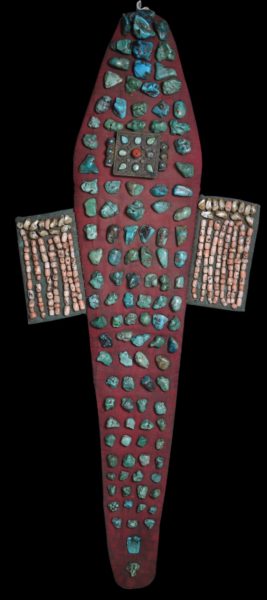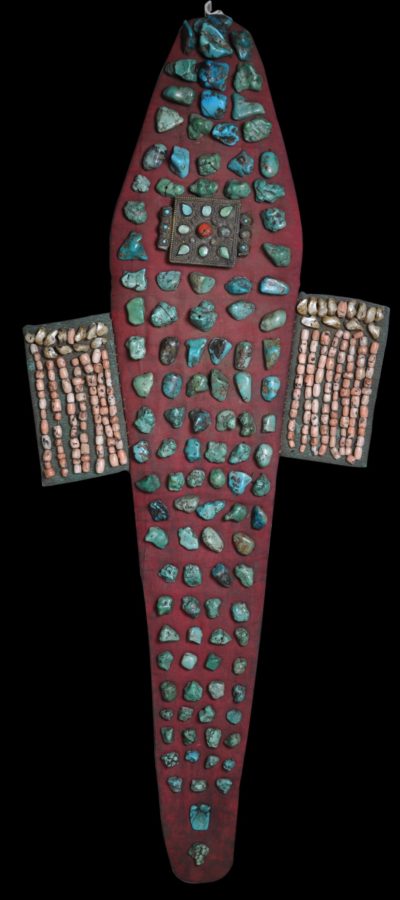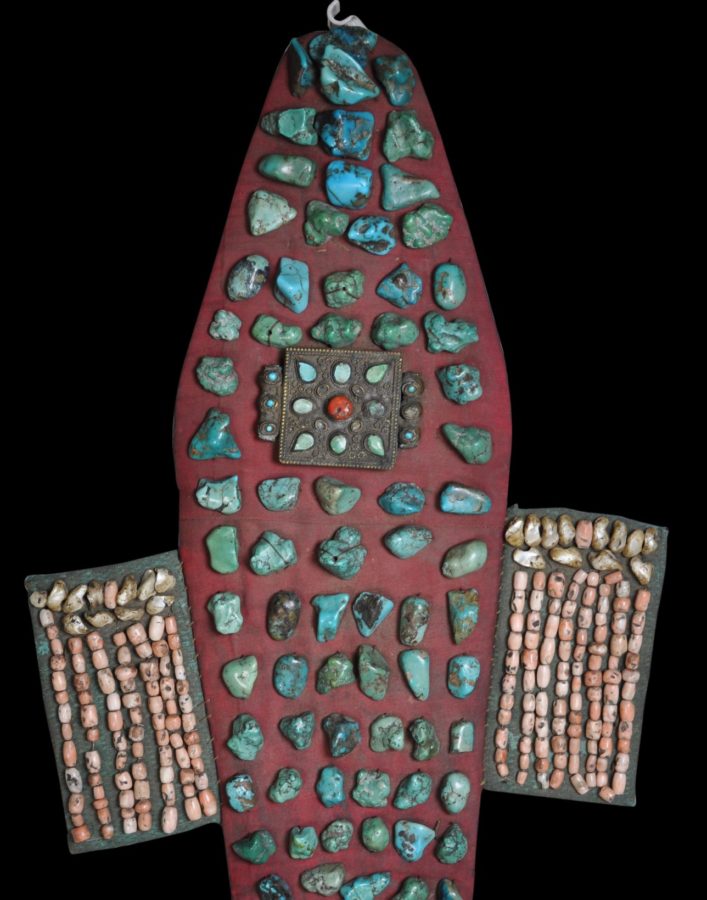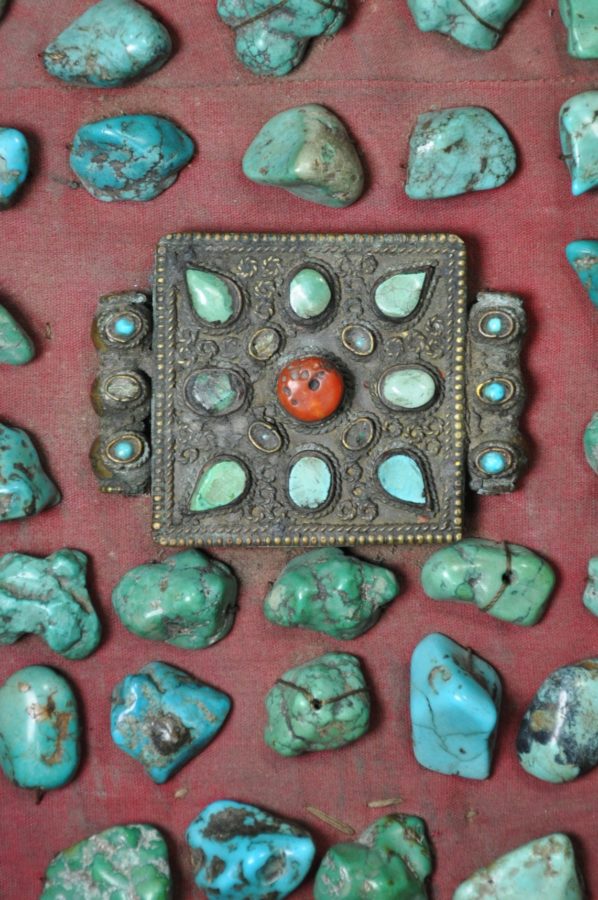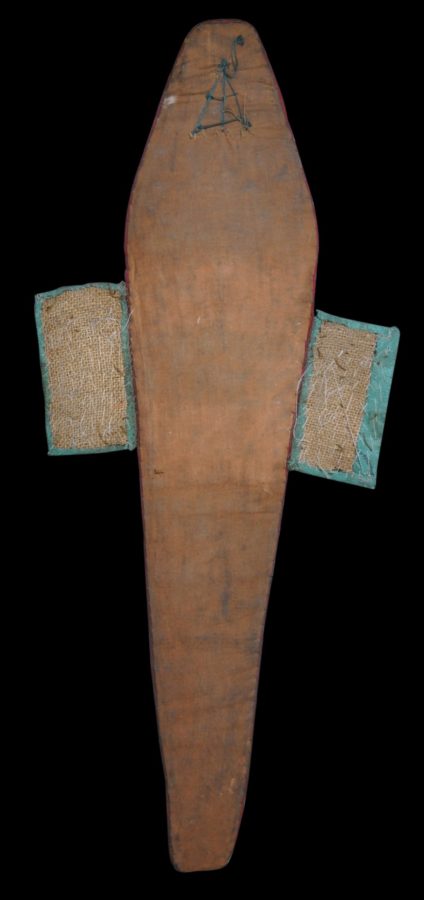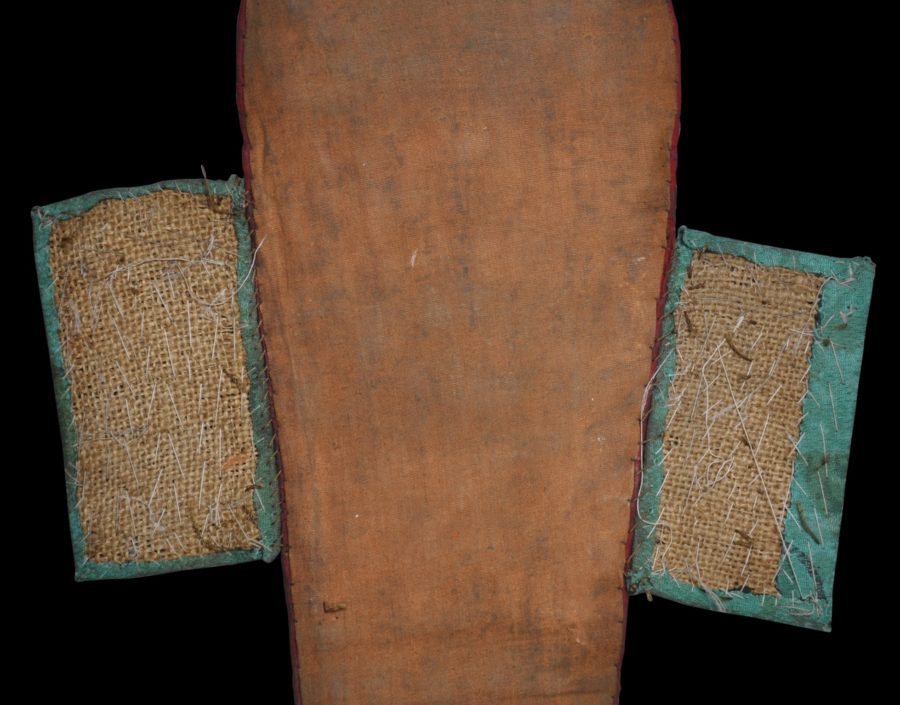This woman’s headdress known as a perak is from Ladakh in Himalayan North-eastern India. It is composed of a multitude of turquoise pebbles, nacre (mother-of-pearl) chips, and old faded red coral beads that have been sewn onto padded red and green-dyed cotton fabric. An old heirloom copper ga’u box decorated with applied filigree, coral and turquoise has been attached to the perak as well.
The form appears based on a cobra (nag) rearing, ready to strike.
Such headdresses were stores of wealth for Ladakhi women. Younger women tended to wear peraks with the stones relatively loosely pack, and older women tended to have peraks with more stones. If funds were needed, then some of the turquoise could be removed and sold off, and when the family’s finances recovered, stones could be purchased to replace those no longer present.
All the headdress elements were considered luxury commodities and were traded into the area from afar. Ladakh was at the intersection of several trade routes which helped to add to the region’s wealth.
Untracht (1997, p. 150) says that ideally, if a perak could be preserved intact then it would serve as a family heirloom and would be presented to the eldest daughter on her marriage. More stones might subsequently be sewn onto the perak so that some older examples that passed through several generations might be particularly laden with stones.
Usually, the best stone will be at the top of the perak, and in this case, the higher-most stone is a sky-blue turquoise with a dark ‘spider’s web’ pattern which was considered desirable.
Peraks are illustrated in Ghose (2016, p. 108) and Untracht (1997, p. 150).
The example here is in very good condition without losses. All the stones appear to be original to the piece. The reverse has the right degree of soiling one would expect and want to see that is consistent with the piece having been worn on the head. The item was acquired in the UK and it is likely that it has been in the UK since colonial times, Ladakh having been adjacent to colonial India.
References
Ghose, M. (ed.), Vanishing Beauty: Asian Jewelry and Ritual Objects from the Barbara and David Kipper Collection, Art Institute of Chicago, 2016.
Untracht, O., Traditional Jewelry of India, Thames & Hudson, 1997.


